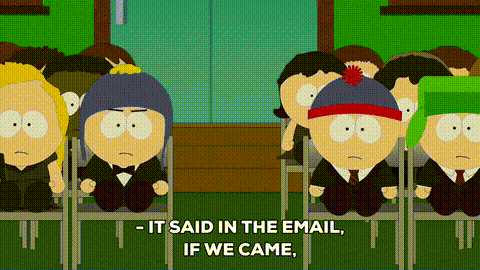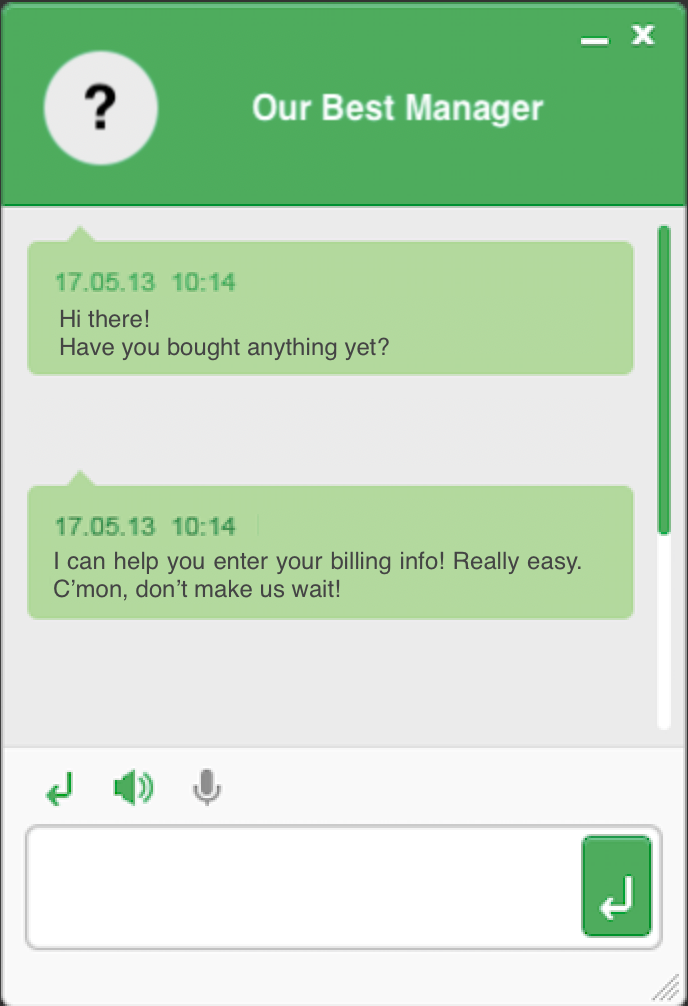As I recently noticed after hanging out on Reddit one evening, I’m not the only one concerned with how triggered messages are done these days.
«Anyone else burned out as a consumer (if not as a marketer) by decades-old email-based lead gen tactics… as well as “conversational marketing” not seeming much better?
Oh, the email popups… and the exit intent popups… and the chat popups… all wanting to take info, only to give value… somewhere else, sometime later, after jumping through some more hoops…
Am I alone in thinking a “site visitor -> activated lead” experience should be much better in 2019?»
So what is wrong with the lead generation process and triggered messages in 2019?

Timing and personalization are vital for lead generation and conversion, so in this article, we’ll take a look at how to make these processes more effective (and less annoying to users) with the help of lead generation triggers.
Lead generation triggers are automated messages triggered under certain conditions to turn a visitor into a lead.
Table of Contents
Who are we going to trigger?
The key idea is different types of leads require different approaches. Some people visit a website and don’t know what they want yet. There are also people who look for something specific. In a nutshell, leads can be divided into:
- Cold leads – onlookers that aren’t ready to buy. They compare offers and consider multiple solutions. It’s important to tell them more about the product and gently lead them to the right decision (that is to buy from you, of course).
- Hot leads – visitors ready to buy. They simply need a little help (e.g., get to know about the terms of payment and/or delivery). However, keep in mind that you still need to qualify those leads to ensure they match the ideal customer profile and score them to asses their value for the company.
Side note: if your company relies heavily on sales, I recommend Aaron Ross’s Predictable Revenue book where he shares a few good ideas on the subject of lead generation, qualification, etc.
Triggered messages in the lead generation process
After users perform certain actions on the website they receive automatic triggered messages. Went to the registration page? Spent some time on the website? Closed the page? Well, there’s a message to trigger for each of these cases. It all acts as a reminder about you, your website or your product.
Automated messages enable businesses to maintain consistent engagement with their customers, eliminating the need for ongoing manual intervention. By tailoring these messages to match individual behaviors and preferences, companies can ensure that every communication feels both personal and relevant. Furthermore, automated messages are highly efficient for managing large volumes of customer interactions, reducing response times and enhancing overall satisfaction.
This approach not only saves resources but also fosters greater brand loyalty, as customers appreciate the quick and precise responses they receive.
Lead generation triggers can be shown in the form of:
- Pop-up windows. Less targeted, but can be shown to most website visitors. Pop-ups can be used for notifications, or to direct traffic, conduct surveys, and capture contact info.
- Chat messages. You can deliver triggered messages to customers via embedded online chats. It is a widget installed on the website to communicate with customers online. Chat widgets provide a way to quickly consult users, answer their questions and potentially influence their decision. It’s a good way to increase conversions.
- Email. Never gets old and still yields the best ROI.
- Web Push notifications. Web push notifications are a way to deliver information to users by means of short messages to the browser they use or directly to their desktop/phone. After they opt-in, the messages are sent whether they’re on the website or not. Similar to an email list, users subscribe but they don’t need to provide any personal information. A lot of them will prefer this option over email subscription.
In-app chats have become popular for real-time communication and customer support. GetStream is a widely used solution that provides a feature-rich chat API and SDKs. If you’re seeking alternatives to GetStream, options like SendBird, Sceyt, and PubNub offer similar functionalities for building and scaling real-time chat in applications.
The game really changed when we started diving deep into chat API and SDKs that could handle both our trigger system and real-time support needs. What’s cool about modern chat API and SDKs is how they let you blend automated messages with human interaction so smoothly that users barely notice the transition.
We’ve found that the right mix of triggers and real-time chat functionality actually creates this sweet spot where customers feel both attended to and not overwhelmed – it’s like having a smart assistant that knows exactly when to step in and when to let the human team take over.
Note: Push notifications only work if your website has HTTPS though there are workarounds provided by many companies.
The lead generation process you choose depends on your goals and audience but you’re not limited to a specific type of triggered message. You can use pop-ups to collect contacts and then launch an email campaign and follow up with push notifications. The end result is a lead nurturing campaign that leads to increased sales.
Popup window lead triggers
It is important to properly adjust popup display time in order to increase efficiency. The right delay depends on a number of factors but you should wait at least a few seconds. You can also set it up to popup when the cursor moves off the screen (meaning the user wants to leave).

If the popup appears immediately after the main page loads, there’s an increased chance that the visitor will leave. Let visitors browse the catalog first, look around, add something to cart, consume content, and then show a pop-up message.
This is why many people use the most private web browser with ad-blocking features, as it helps create a better user experience by reducing intrusive popups and ads, which can be off-putting to visitors.
Wisely delayed pop-ups can boost your subscription rate up to 3 times. The thread on pop-up timing on StackExchange suggests the delay may vary from 5 to 60 seconds. Might sound confusing but there’s a wise tip in the very same thread: refer to your ToP (time on page) metric and display the pop-up before the user leaves. There’s no point in 60-second delay if your average is just 10 seconds.
As for the content of the popup it varies from industry to industry:
- In Ecommerce, pop-ups tend to present a discount (if your company cannot offer a discount, remember that users may be interested in useful content — guides, case studies, selections, etc.)
- Media resources offer subscriptions or, again, notify about a limited time offer of a discount
- B2B companies can use popups to suggest to schedule a meeting/call.
As a particular instance of a quality pop-up content, one can gamify customer experience and offer people lead quizzes. It is a great option to:
- Step-up your engagement rate and reach out to those who are usually hard to engage (let alone convert)
- Get to know your potential/existing customers better
As an interactive form of content, lead quizzes have proven to be up to 3-4 times more efficient in terms of lead generation and conversions. You can learn how to create a viral interactive quiz for lead generation in a thorough post by KyLeads.
Web-push notifications
Web-push is more appealing to users who do not want to leave their contact info. They hit the “subscribe” button and receive triggered messages via their browser or directly to the desktop even when the browser is closed.
Most use push notifications promote content, but they can do more than that:
Personalization and push-segmentation are in full bloom these days. Here is an example of bulk segmentation at OneSignal. Take a closer look at their docs to get an idea of what is possible in regard to user-to-user notifications.
Here’s a glimpse at how one can use push-notifications:
- to work with customer doubts and objections
- to offer useful advice
- as a reminder that a customer has yet to make a purchase, or finalize an order
Notifications help online stores:
- Talk about discounts and promotions.
- Remind of an abandoned basket.
- Show additional goods.
Many services use push notifications as a reminder to their customers (offers, delivery dates, order status, etc), or send interesting content and thus warm their leads up.
Optimizing the lead generation process with email
This one is a versatile tool to use in different scenarios. You can remind users about your existence, you can educate your user base, or (in a case with an online store) make them return to the cart and close the deal.
Online stores use it to:
- increase the average order value by sending users a personalized catalog of goods;
- upsell;
- remind about products they browsed through or left in the shopping cart;
- distribute unique content and increase customer loyalty.
Mailing lists are usually used in conjunction with pop-ups. It is a good way to segment the user base and show them targeted pop-ups.
SaaS services can use a newsletter to solve the following tasks:
- motivate users to make their first payment or renew a subscription;
- perform onboarding;
- Inform users about updates;
- increase user loyalty through emails with case studies, expert opinions, and other types of specific user-oriented content.

Subscribers might not see the value of the service after the first month of use and will not renew the subscription. Sending them a series of messages is useful to prepare them for renewal (in advance) or make them reconsider later. That’s where need to think through your email strategy.
When and what emails to send:
- Send the first email right after the subscription is complete. Provide readers with the info on when the subscription ends, the price and remind them about the auto-renewal feature (if present).
- Send a follow-up email in the middle of the month. Tell users about new features of your service, showcase recent customer cases, work out most (if not all) objections, provide solid statements and proofs for why you’re useful and worth your price to make users prolong the subscription.
- At the end of the month, a user should receive an email informing them the subscription expires in x days. This may be an opportunity to encourage them to upgrade.
If someone cancels the subscription in advance, send them a reminder email with info on when it ends and how to renew it. Write a compelling headline so it gets opened then remind them why your service is amazing.
Also pay attention to your email campaigns to avoid pitfalls. The most common is dead-end lead feedback. A lot of campaigns target potential leads, simply sending offers, content, or whatever. It seems to be enough, right?
No.
These automated campaigns are often left unmonitored. It is not uncommon (even from my experience as a lead) for a lead to take interest in an offer, ask some questions, and get no feedback. Setting up a campaign is not enough, you also need to monitor it, segment it and manage it over time.
Online Chats
Online chat is a useful tool for digital marketers and entrepreneurs when you want to help a customer pick a product, tell them more about special offers, or otherwise help with a purchase. It also helps you build trust. When people can ask about the size of clothes, terms of payment and/or delivery and get an answer right away it builds a connection between your platform and a user.
Some users are not ready to write first. After a user has spent some time on your website you can reach out to them via the chat.

Send them a triggered message like this:
“Hi, I’m your personal consultant [name of the consultant].
How may I be of assistance?”
The message and timing may vary.
For example:
Imagine a customer browsing through a specific section of your catalog for 3 to 5 minutes. That’s when you can address a customer with a more specific message: “Hi, looks like you couldn’t find the [product type] you need. Let us know what you’re looking for and we’ll tell you when it’s going to be in stock.”
You may be surprised but many users still treat these chats as automated, lifeless, pointless implementations and don’t trust them. “Why waste my time and write to some stupid bot which is not going to help me anyway?”
There are two important aspects to consider:
- motivate users, make the first step (people are kind of shy when it comes to parting with their money)
- show them you’re a real person, not a generic chat-bot
It’s all a part of a broader field — conversational marketing, which companies like Drift specialize in. It is fairly simple to implement and won’t require you to conduct a redesign or start your business from scratch. You can read a detailed guide to the conversational framework on their website.
Conclusion
Lead generation triggers help inform customers about the best deals, as well as increase loyalty and average order value. Use the appropriate types of messages and configure scripts properly to effectively solve business problems.
Do not spam, take it easy and make your pop-ups smaller, people want to consume content without being interrupted. There is a reason why users choose to block ads and even Google introduced inbuilt ad-blocking in Chrome.
Despite Google’sdominancein the online advertising space, the growing prevalence of ad-blocking tools confirms that users want an unobtrusive browsing experience. This trend reflects a broader shift in consumer behavior that prioritizes privacy and control over online interactions.
Advertisers are being forced to adaptto resonate with increasingly discerning audiences by creating more engaging and less intrusive advertising content.
Dial it down a little.
However, remember every channel and every message has room for variation. Think outside the box and don’t forget about personalization. Be sincere, stay close, grow profitable.
Dmitrii Borodin, founder of GRIN tech — a boutique agency doing things online and claiming to do a full cycle: design, development, and marketing. Apart from client projects and everyday hustle GRIN tech’s team is playing around with in house projects like GRIN launcher & GRIN games. Find them on Twitter and Reddit.